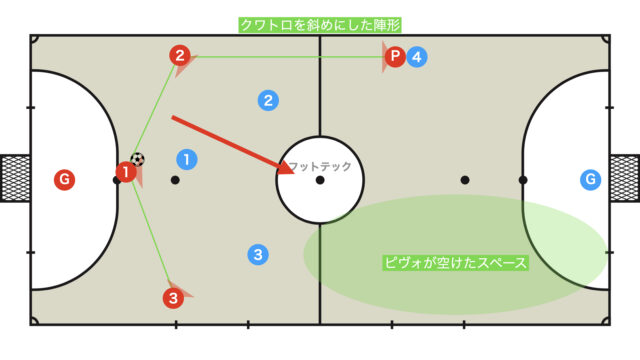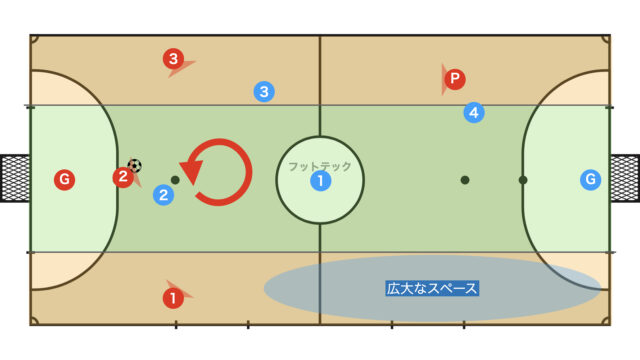When starting competitive futsal, aren’t there many who begin with a tactic called “Eight”?
Although this tactic appears very simple and easy to understand at first glance, if misinterpreted it can be extremely weak and utterly ineffective, ultimately becoming a tactical liability.
Moreover, considering that almost no national or club teams use “Eight”, it goes without saying that it is a very weak tactic.
However, as an introductory model for futsal beginners, it is not a bad play model at all; it is extremely important to approach it with a solid understanding of its essence and then build upon it.
This article will thoroughly explain, using diagrams, exactly what kind of tactic “Eight” is and what its aim (essence) is.
- Positioning
- Overview of Rotation: Figure Eight Rotation
- The Essence of Eight: A Series of Duo Relationships
- When the Ball Holder Is Not Under Press
- A Bad Example: Breaking Through by Solely Focusing on the Figure Eight Shape Without Thinking
- When the Ball Holder Is Under Press: Parallel Support
- When the Opponent’s Defense Sets Up Multiple Lines
- Reasons Not to Recommend Eight
Positioning
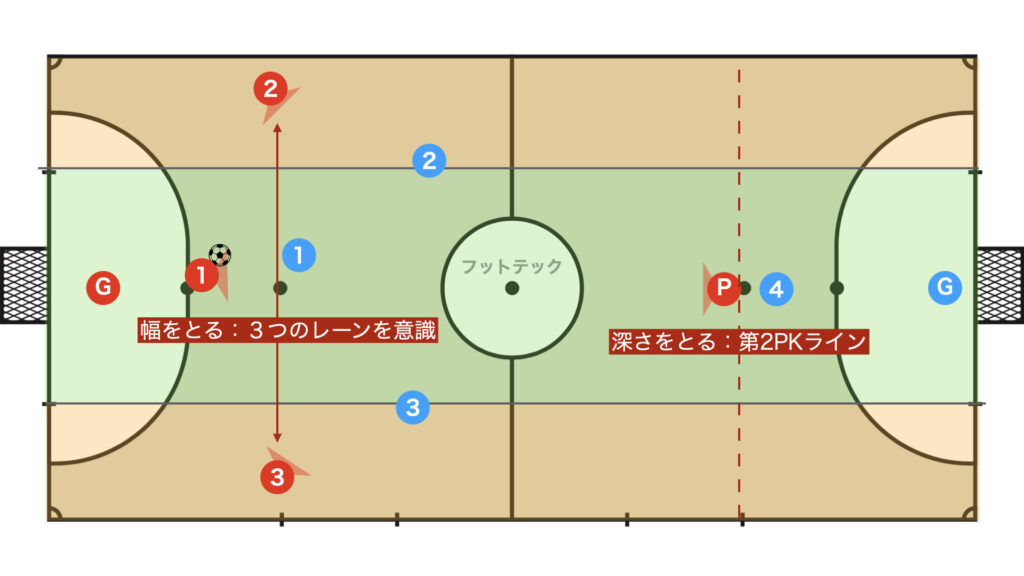
In futsal, it is extremely important to consider who to position where in order to make effective use of space.
In a 3-1 formation, the three players at the back occupy separate lanes, and the pivo takes up depth near the second penalty kick line as a basic principle.
Simply being aware of this positioning naturally ensures smooth ball circulation, even without overly focusing on rotation.
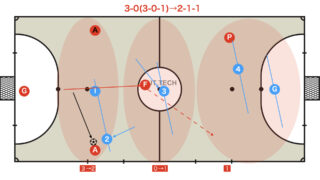
Overview of Rotation: Figure Eight Rotation
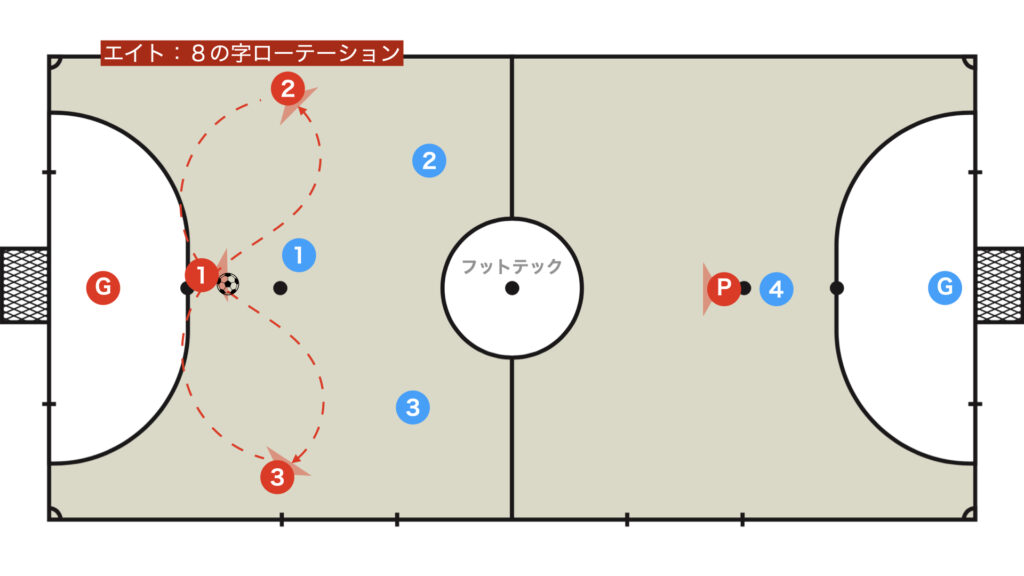
As shown in the diagram above, because the three players at the back rotate in a pattern that forms a figure eight, it is called “Eight”.
Apart from “Eight”, there is also a rotational method involving turning, and the three-man rotation of false pivo is a very famous tactic.
The Essence of Eight: A Series of Duo Relationships
Establish a Duo Relationship by Shifting to the Side Where the Ball Is Played
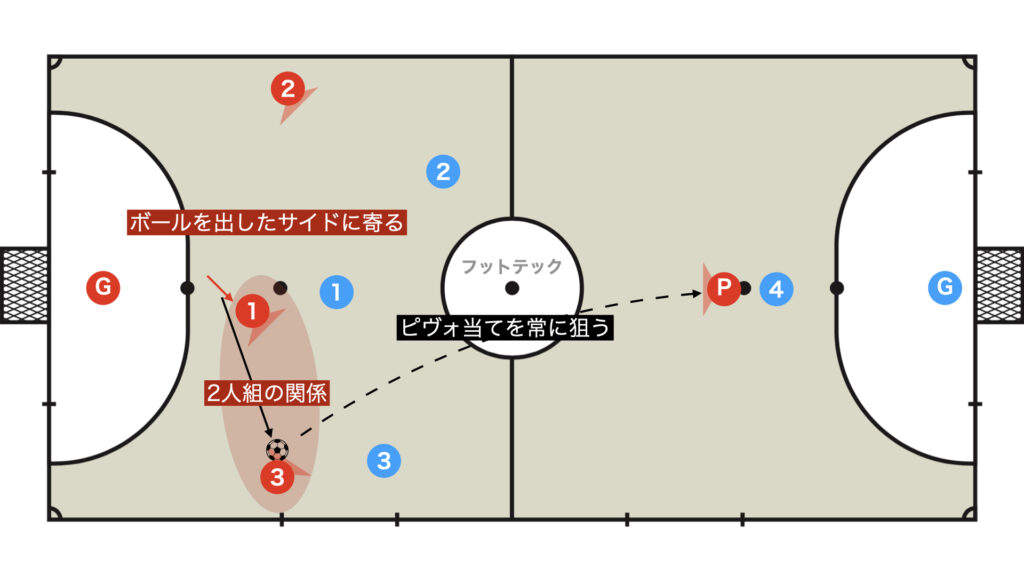
The essence of “Eight” is to continuously establish duo relationships on the flanks to break down the opponent’s defensive organization.
However, if you break through using Diagonal, it disrupts the figure eight rotation; therefore, if you do break through, you should only use Parallera.
Specific Actions
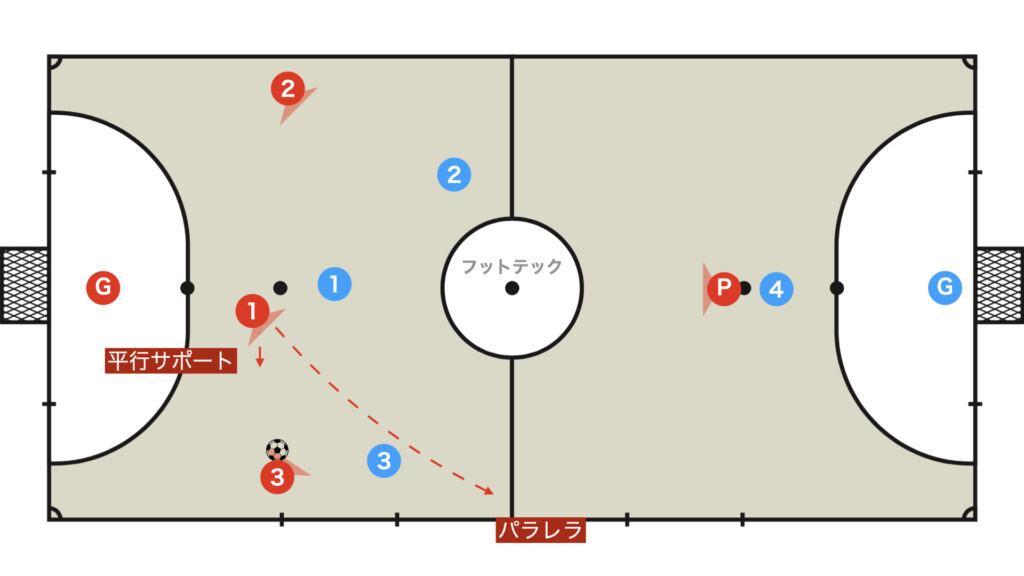
- If the ball holder is not under press: break through with Parallera
- If the ball holder is under press: provide parallel support (one-two, block or curtain, etc.)
When the Ball Holder Is Not Under Press
Break Through with Parallera
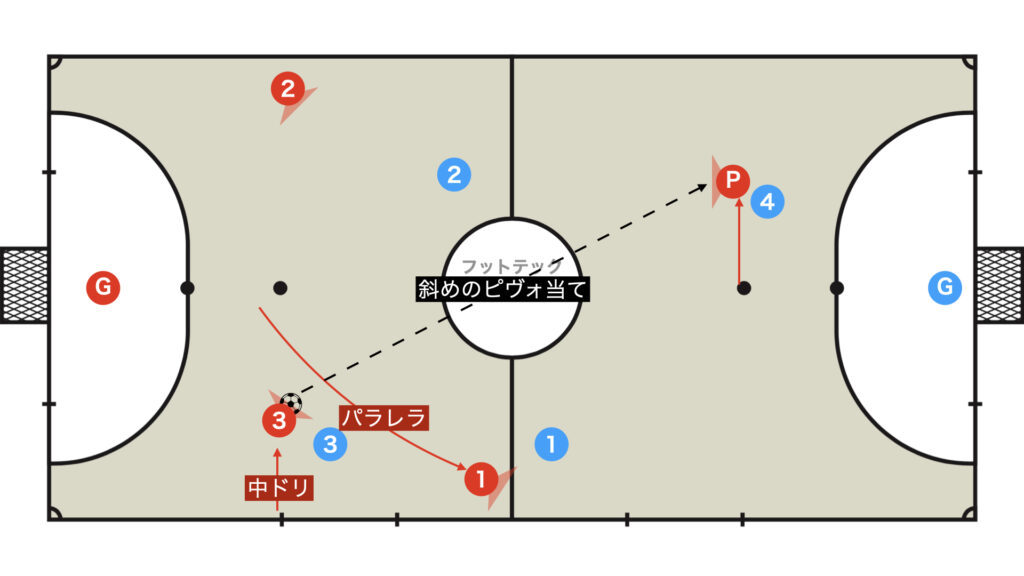
If a simple Parallera does not work to break through, perform a Central dribble and opt for a pass to the pivo.
The method for breaking down after a pass to the pivo is explained in the following article, so it will be omitted here.
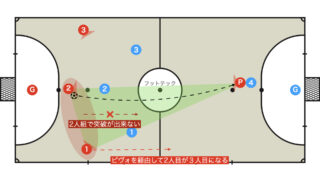
Return to Original Position
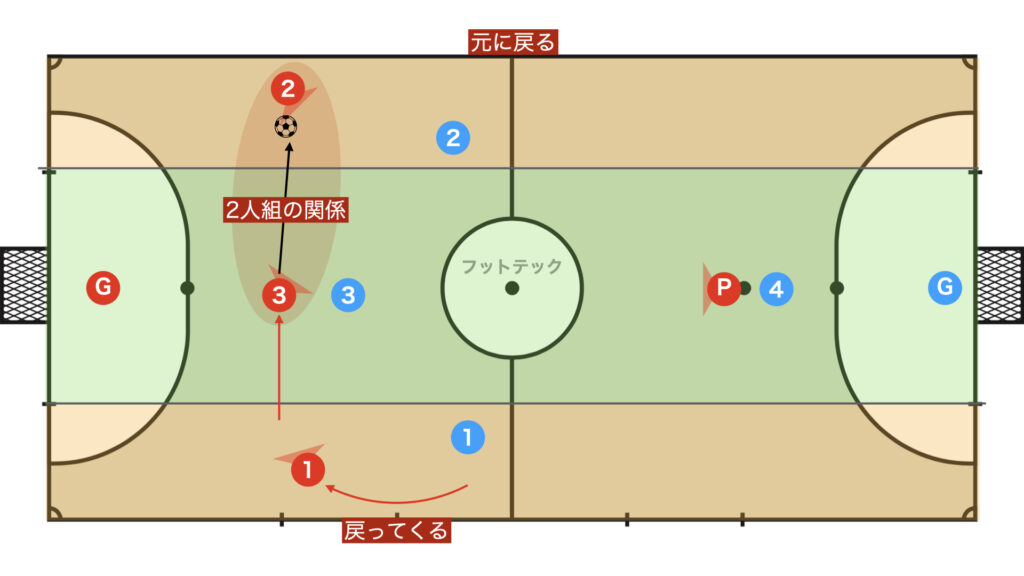
Occasionally, there are players who, after breaking through with Parallera, do not return; however, if you wish to maintain the 3-1 formation, they must always fall back.
If you intend to transition from 3-1 to 2-2, it is perfectly acceptable to remain as the pivo.
A Bad Example: Breaking Through by Solely Focusing on the Figure Eight Shape Without Thinking
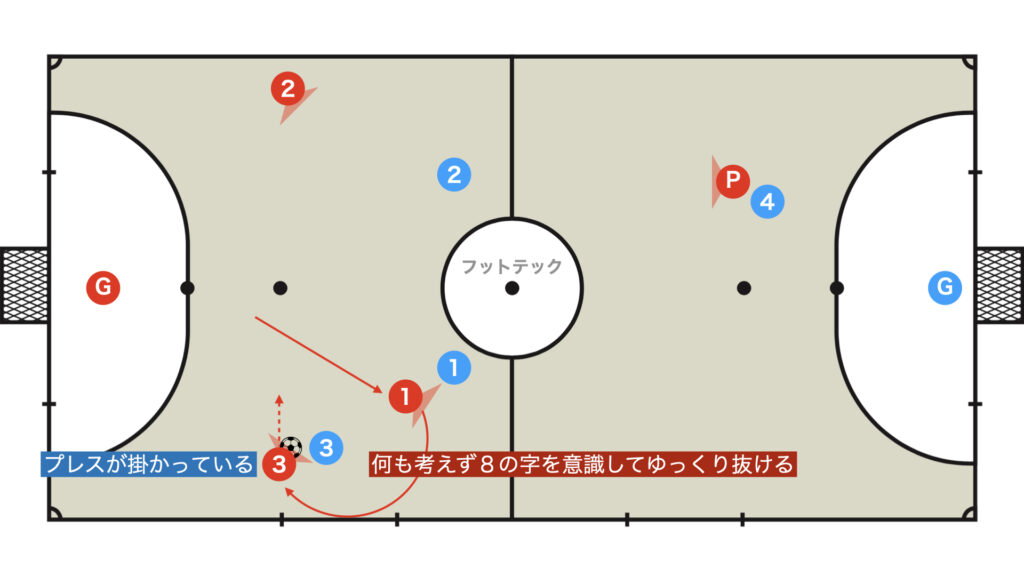
A common anti-pattern among futsal beginners is blindly breaking through even when the ball holder is under press.
However, if you always maintain awareness of the duo relationship, such plays are absolutely unthinkable.
These kinds of plays, where rotation is mistaken as an end in itself, are a common anti-pattern among those who confuse the means with the end.
In such cases, rather than breaking through, it is preferable to provide parallel support to the ball holder.
(If you do break through, it is a fundamental rule to do so using a Parallera with an awareness of pace variation.)
Next, we will explain what parallel support entails.
When the Ball Holder Is Under Press: Parallel Support
- When receiving with fixo → one-two, pass to the pivo, or pass to the opposite-side ala
- Block or curtain → have the ball holder perform a Central dribble to rotate
Fixo Receives the Ball Once More
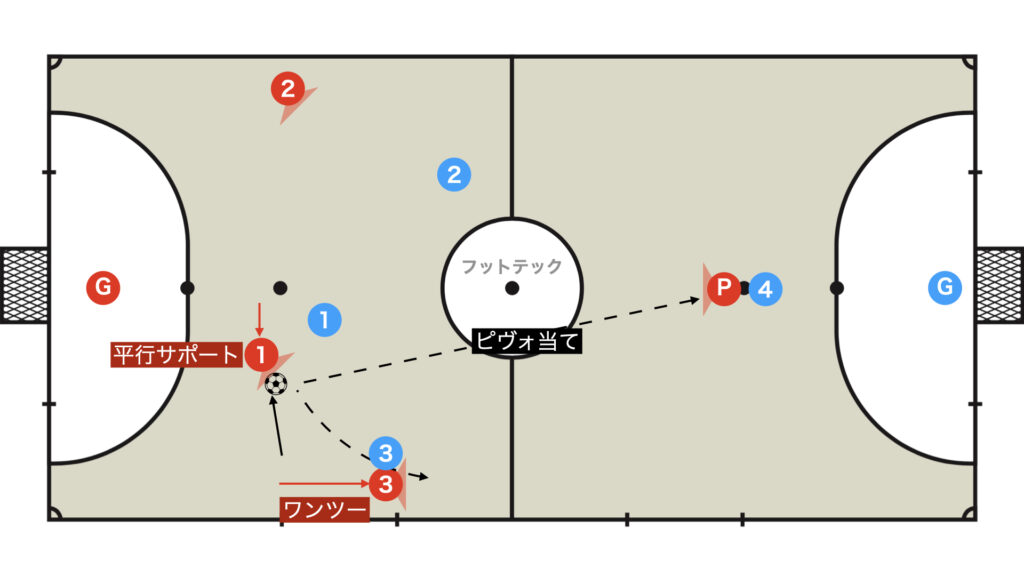
It is simple and highly effective for fixo to receive the ball again and aim for a one-two.
If a one-two is not possible, then aim for a pass to the pivo; in that case, the red number 3 who breaks through with a one-two becomes the third man.
When Neither a Pass to the Pivo Nor a One-Two Is Possible
Opposite-Side Ala Backdoor
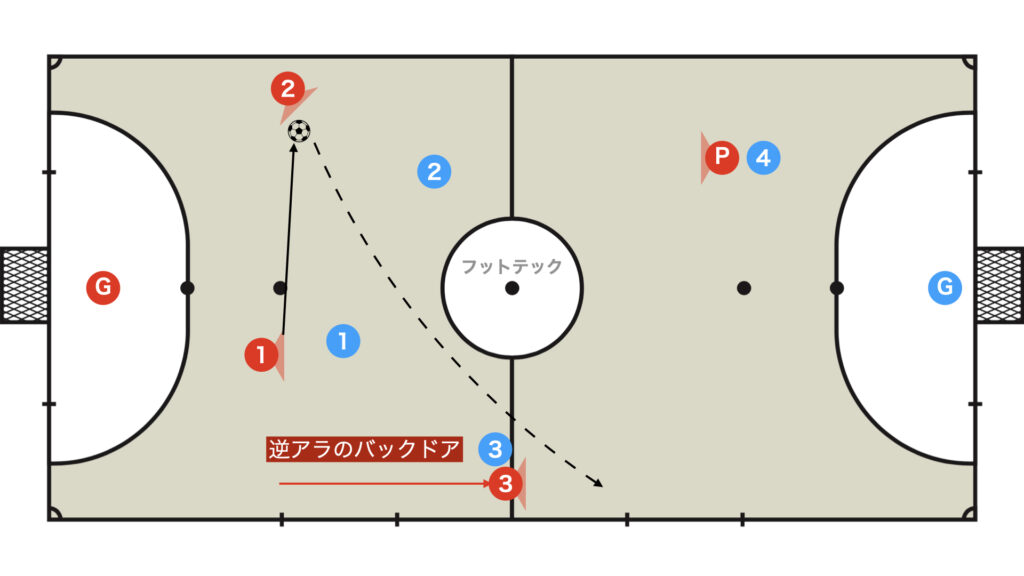
If neither a pass to the pivo nor a one-two is possible, there is also the option of executing a backdoor via the opposite-side ala.
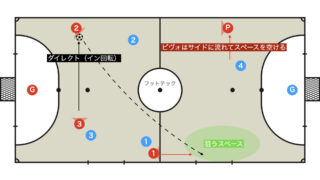
Receive the Ball Again at Your Feet → Re-establish the Duo Relationship
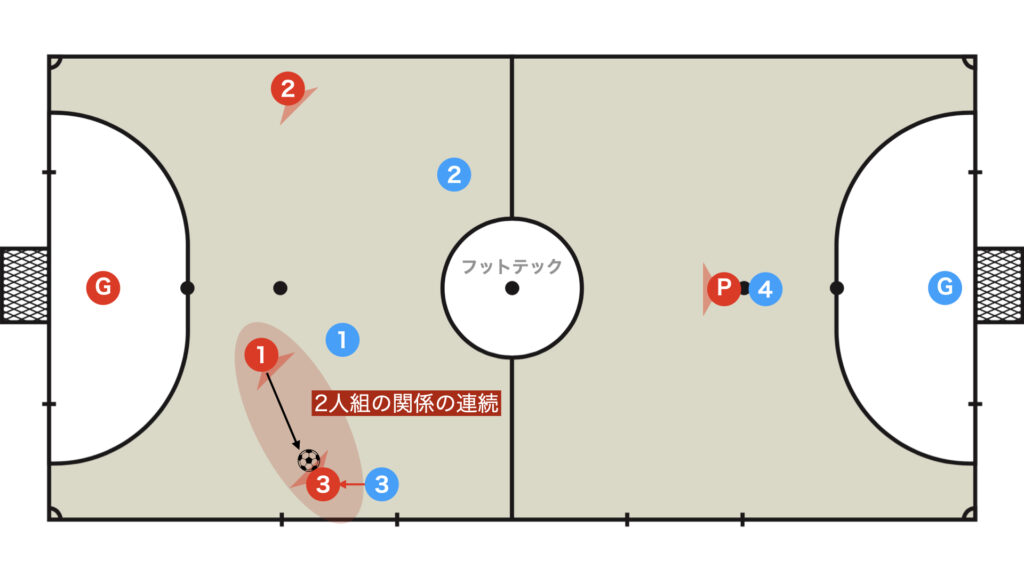
If there is no option to pass to the opposite-side ala, cancel the attempt to target behind and instead receive the ball again at your feet to continue the duo relationship.
When You Want the Ball Holder to Dribble for Rotation
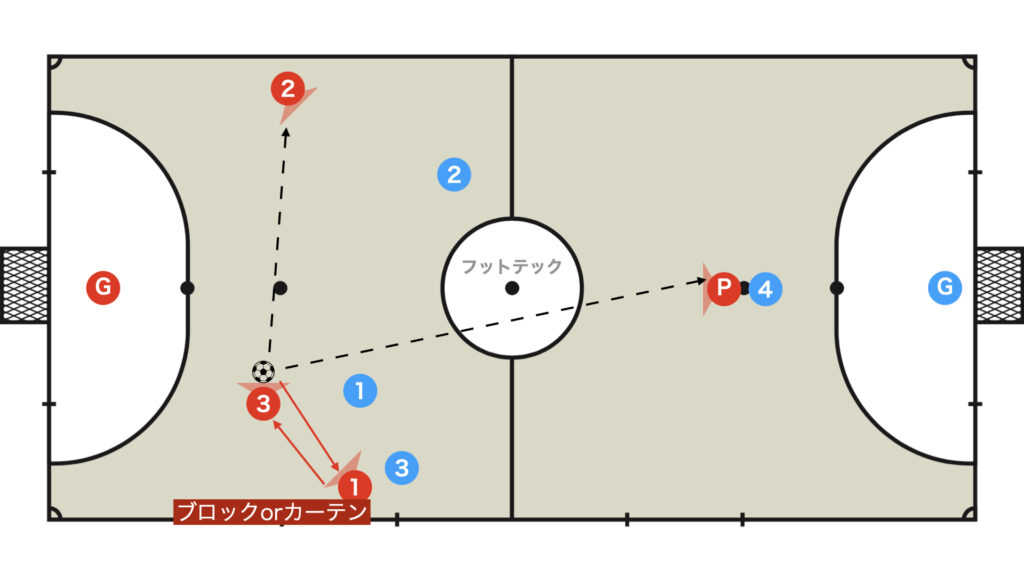
If you want a teammate to perform a Central dribble, block or curtain to allow them to return to the original positioning.
At this time, since a passing lane to the pivo tends to open up, it is a fundamental rule to aim for a pass to the pivo.
When the Opponent’s Defense Sets Up Multiple Lines
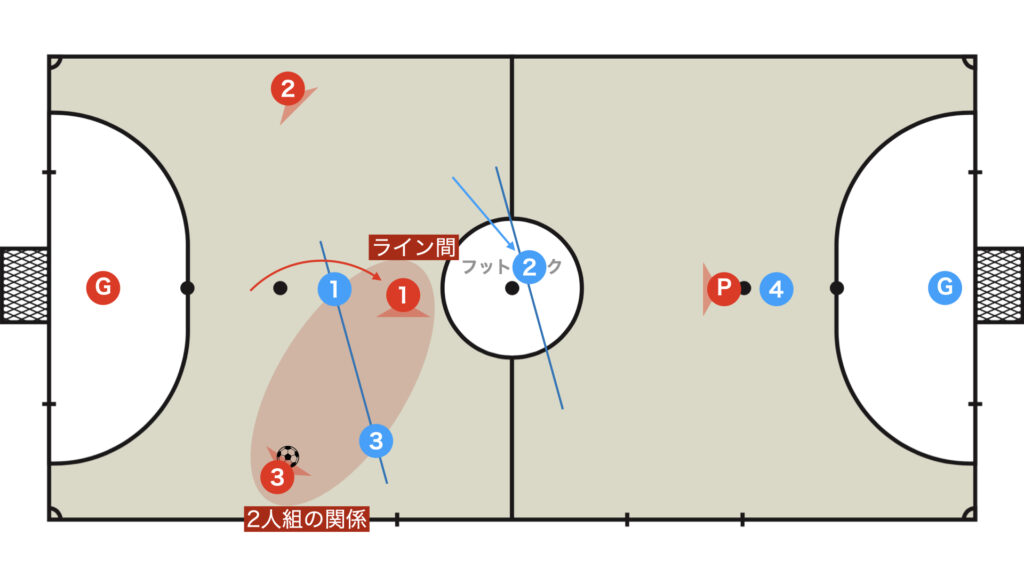
If the opponent sets up multiple lines in a zonal fashion, Parallera does not function effectively.
In such cases, rather than blindly breaking through, it is preferable to dismantle their structure through turns between lines or by exploiting duo relationships.
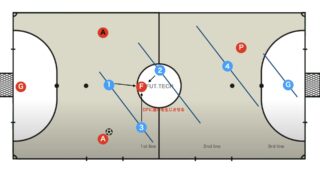
Reasons Not to Recommend Eight

Even when looking at national teams and club teams from various countries, almost no one uses “Eight”.
The reason is that it is a very weak tactic that is easily read by the defense.
If the only option for a player breaking through is Parallera, the defense can easily deal with it.
It is precisely because the receiver can negotiate between the options of Diagonal and Parallera that they can baffle the opposing defense; however, an “Eight” that eliminates the option of Diagonal makes it extremely difficult to break down the defense through duo relationships.
Thank you very much for reading this article to the end.
If you found this article useful, please consider sharing it using the social media share buttons above.
We regularly share valuable insights on futsal tactics on Twitter, so if you haven’t followed us yet, we’d appreciate your support!
We are committed to raising the level of futsal in Japan by sharing high-quality information through discussions with individuals who have coaching experience in the F.League and overseas.
If you have any questions or notice any mistakes, feel free to leave a comment below.
We update our articles regularly, so if you’d like to keep reading, please bookmark our site or search for “FutTech”!
